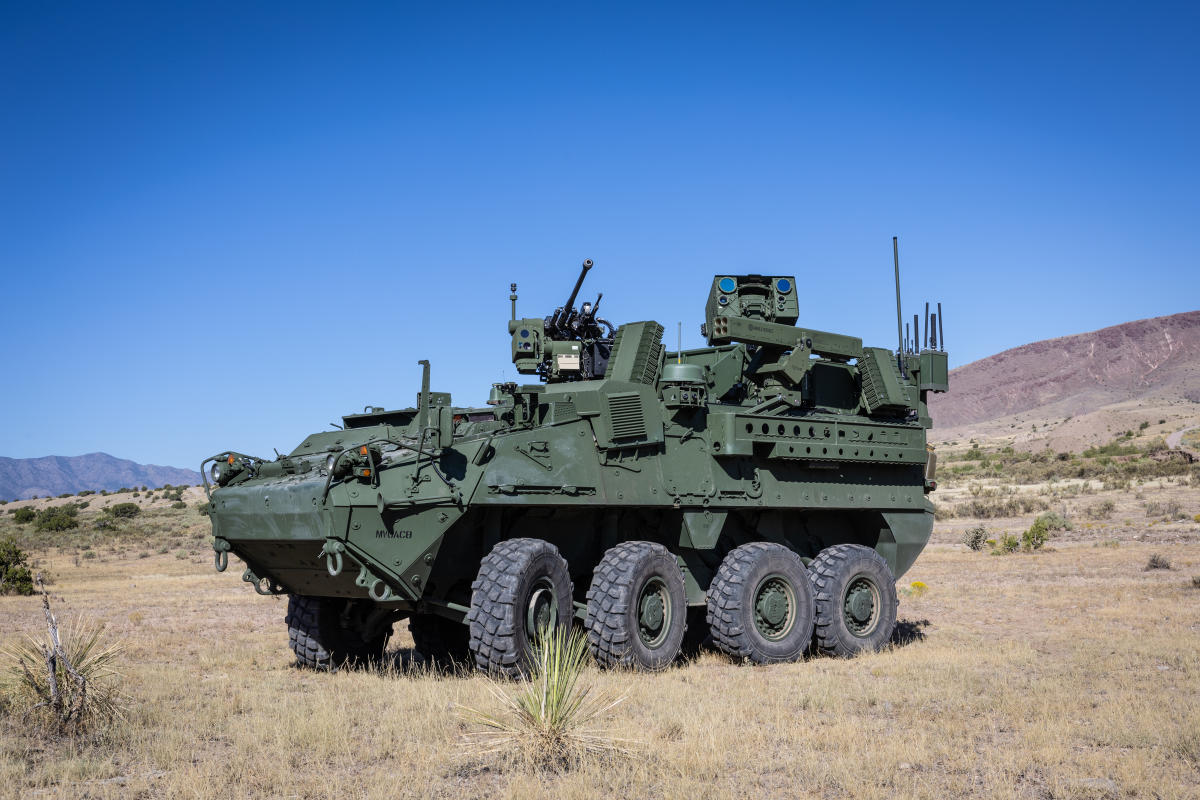
After an eight-month sprint to develop and install a laser-equipped counter uncrewed aircraft system on an Army Stryker vehicle, Leonardo DRS and BlueHalo announced today they conducted a successful live-fire test of the system last month in New Mexico.
The Stryker-based directed energy Counter-UAS prototype, dubbed a C-UAS DE Stryker, can detect, identify and track multiple drone threats and use both kinetic and non-kinetic means to neutralize them. During the demonstration, the system destroyed multiple uncrewed systems, proving it could near-simultaneously track and engage targets with either a laser or a kinetic effector like a cannon or gun.
“Over two days of live fire activity, right after our initial testing, the system was 14 of 14 against small UAS within the constraints of the range,” Ed House, Leonardo’s senior director of business development for land systems, told Defense News. “Those were all defeated by the 26-kilowatt Locust laser weapon system that’s fully integrated on a modified Stryker.”
With BlueHalo’s Locust laser weapon as the centerpiece of the project, Leonardo DRS served as the prime integrator, also providing cameras and the system’s computer. Six other companies also provided subsystem support, including BAE Systems, EOS Defense, Arnold Defense, Northrop Grumman, Digital Systems Engineering and Ampex.
The integration effort and demonstration were funded by the “coalition” of industry partners, House said, noting that the Army provided a Stryker for the project.
The flexibility to use multiple effectors and integrate a slew of payloads from several providers is one key feature of the effort, House noted. Also significant is the laser’s power source. Rather than operate from a battery like most directed energy systems, Leonardo and BlueHalo were able to integrated the Locust’s power system with the vehicle, eliminating the need for a battery recharge between cycles.
“The only limiting factor we have on this Stryker is thermal management, and that means that as long as we keep the laser cool, we can continue to engage over and over and over again,” House said. “When you add laser technology — directed energy — without a power limitation, you extend the magazine.”
The demonstration has drawn some interest from the Army, House added. In the coming weeks, the team will wrap up some final integration efforts on the vehicle and then in December it will participate in a two-week concept verification effort at White Sands Missile Range in New Mexico run by the Army’s Rapid Capabilities and Critical Technologies Office.
Data from that verification event as well as the September demonstration will inform next steps for the DE Stryker.
Mary Clum, BlueHalo’s corporate executive vice president, said that following the demonstrations, the team will shift its focus toward production and scaling the technology. The company is currently building up its manufacturing capacity for Locust so the system is available when needed to be integrated with a range of systems.
“As we’re scaling up our manufacturing, we’re making it multi-purpose,” she said, noting that it has already been installed on an infantry squad vehicle and the Army’s Joint Light Tactical Vehicle. “We want to show that you can utilize those with what’s in the inventory today.”
EMEA Tribune is not involved in this news article, it is taken from our partners and or from the News Agencies. Copyright and Credit go to the News Agencies, email news@emeatribune.com Follow our WhatsApp verified Channel





